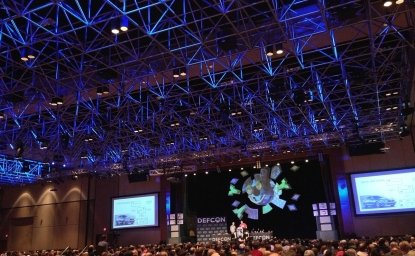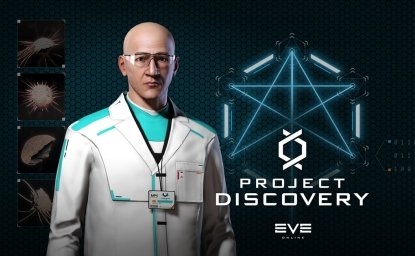th[scope="col"]
{
background-color: #D9D9D9;
}
#Maize
{
margin-top: 79px;
}
.PageH1
{
color: #3a3f47;
font-family: Arial,Helvetica,sans-serif;
font-size: 20px;
font-weight: normal;
line-height:24px;
margin-top: 12px;
margin-left:6px;
width:99%;
padding-bottom:2px;
border-bottom:solid 1px #CCCCCC;
text-align: center;
}
.tocify
{
margin-left:6px;
}
#footer
{
background-image: url("/cwis438/websites/CitSci/images/Footer_BG.png");
background-repeat: repeat-x;
}
Over the fall of 2013, organizations supporting citizen science came to a landmark agreement - to share basic information across databases that catalog citizen science projects. The collaborative success for citizen science and public participation in scientific research (PPSR) led to the development of the PPSR_CORE Program Data Model Metadata Standard / data sharing protocol. Sharing information across databases maximizes everyone's efforts, getting more "bang for the buck" out of information about citizen science projects everywhere. It leads to current, up-to-date, and synchronized project lists and a broader understanding about citizen science globally.
The Need
With the proliferation of citizen science, a number of organizations have been cataloging projects to offer support, network practitioners, and/or track outcomes. These efforts are complementary. Up-to-date information about citizen science projects is valuable to both project leaders and researchers, but the task of entering and maintaining this information in multiple places is cumbersome
The Significance
By agreeing to openly share core data fields about projects, the citizen science community benefits:
The Team
Several core founding organizations started the PPSR_CORE initiative (below) and we are now forming an international working group within the Citizen Science Association to continue this important work.
PPSR_CORE Metadata
Required Fields
Below are required metadata fields, formats, and descriptions.
IDFieldData TypeRequiredVocabularyDescription
1
ProjectGUID
GUID
Y
A Globally Unique Identifier (GUID) for each PPSR project
2
ProjectName
text
Y
Name of project
3
ProjectDataProvider
text
Y
Name of data provider / source / initial first registry
4
ProjectDescription
text
Y
Description of project related to aspects such as goals, objectives, purpose, vision, etc.
5
ProjectDateLastUpdated
ISO 8601 DateTime (UTC)
Y
Date the project information was last updated; (required in DBs but not in XML)
6
DatabaseContactName
Person Object / Construct
Y
Database contact first and last name
7
ProjectStatus
text / categorical
Y
Starting, active, complete, hiatus
Current status of the project activity
Optional Fields
Below are optional metadata fields, formats, and descriptions.
IDFieldData TypeRequiredVocabularyDescription
8
publicContact
Person Object/Construct
N
Person that interested public or researchers should contact
9
publicContactAffiliation
text
N
Public contact primary affiliation
10
publicContactEmail
text
N
Public contact email address
11
publicContactPhone
text
N
Public contact phone number
12
publicContactAddress
text
N
Public contact mailing address
13
numParticipants
int
N
Total number of registered participants
14
projectActiveParticipantDefinition
text
N
Definition used by the project for an "active participant"
15
numActiveparticipants
int
N
Total number of active participants based on the project's definition of activity
16
participantAge
int
N
Age of participants (if known)
17
participantAudience_Scistarter
text
N
-- Select --
Target participants (defined by user research with Scistarter)
18
participantEducation
text
N
-- Select --
Type of education required for participation
19
educatorMaterials
text
N
Link(s) to project's teacher guides and/or note avaialbility in print form
20
participationTasks
text
N
-- Select --
Participation tasks
21
projectGear
text
N
Essential equipment for participation (tools, gear, field equipment, apps, Internet access, etc.)
22
fieldOfScience
text
N
-- Select --
General field of science. Top level categories defined by National Academies
23
projectInstitutionName
text
N
Institution or organization that is hosting the project
24
projectDataAPI
text / url
N
URL or API for current data
25
projectImage
image
N
Image
26
projectURL
text / url
N
URL for project home page
27
projectFacebook
text / url
N
URL for project Facebook page or group
28
projectTwitter
text / url
N
Project Twitter handle
29
projectBlog
text / url
N
URL for project blog
30
preferredSocialMedia
text / url
N
Preferred social media outlet (may or may not be listed above)
In Progress Fields
Discussion of the following metadata fields is an ongoing process.
IDFieldData TypeRequiredVocabularyDescription
31
ProjectStartYear
ISO 8601 Year (UTC)
N
Year project started (not date volunteers begin participation)
32
ProjectEndDate
ISO 8601 Date (UTC)
N
End date of project if applicable
33
ProjectOrganization
text
N
Organization supporting the project
34
ProjectPartners
text
N
List of project partners
35
ProjectScientificPartners
text
N
List of scientific collaborators; i.e. scientists or academic departments using the data collected
36
ProjectSector
text / categorical
N
-- Select --
Project sector description
37
ProjectGeospatialRange
text
N
-- Select --
To define active range - could be continental/state/province/counties/etc. Use the EML standard for inspiration?
38
ProjectCoverageBoundary
WKT data / many LL coordinates / Polygonal data
N
User-defined polygon
39
ProjectPinLatittude
floating point
N
Latitude coordinate in geographic decimal degrees for the center or home base of the project best representing the project's location as a point.
40
ProjectPinLongitude
floating point
N
Longitude coordinate in geographic decimal degrees for the center or home base of the project best representing the project's location as a point.
41
ProjectTags (or ProjectKeywords)
text
N
List of tags to assist with searching and filtering.
42
ProjectMetadata
text
N
Catch-all for any project-specific data administrators want to make available.
43
projectVolunteerSupport
text/ categorical
N
-- Select --
The training, communication, incentives, and other forms of support that a project offers its volunteers.






